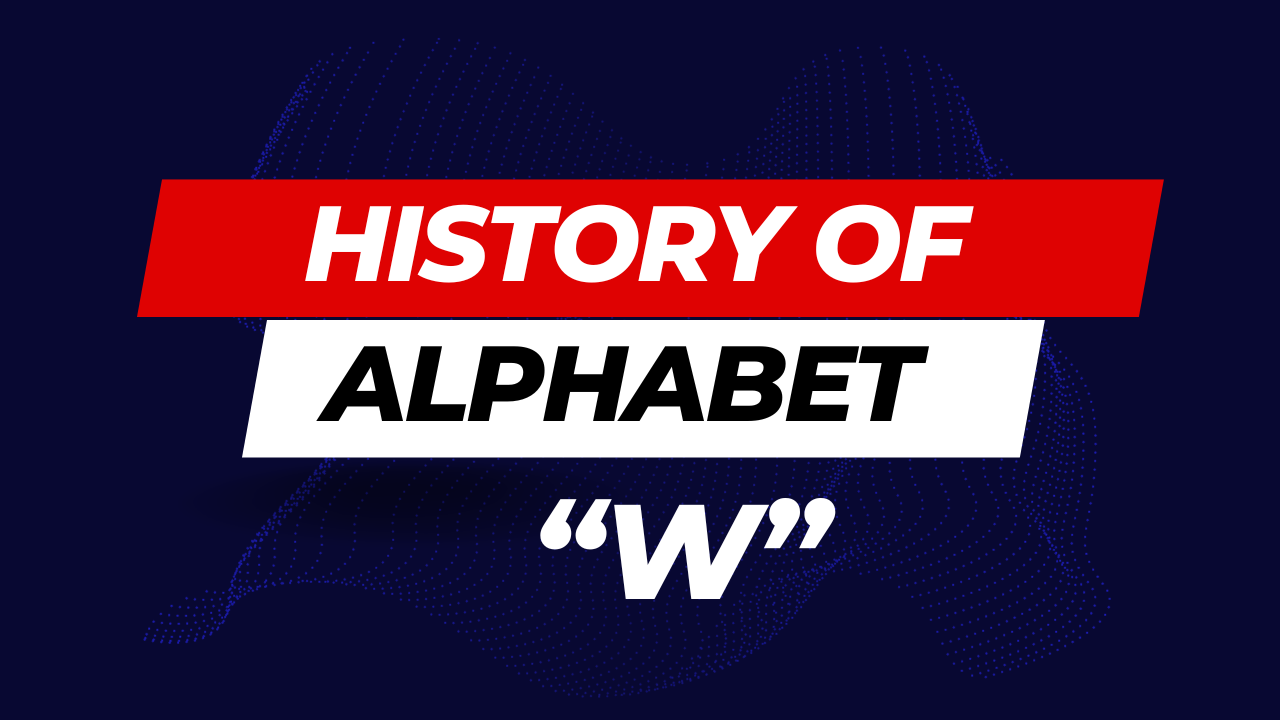Welcome, dear readers, to a captivating exploration of the History of Alphabet "W." In the vast tapestry of written language, every letter carries a story, and "W" is no exception. In this article, we will embark on a journey through time, tracing the origins of this enigmatic letter, its evolution across civilizations, and the profound impact it has had on communication. Join us as we unravel the wonders of written language and dive deep into the world of "W."
The Birth of "W": An Ancient Tale
In the annals of linguistic history, the birth of "W" can be traced back to ancient Phoenicia, where ingenious scribes crafted a symbol to represent a consonant sound that did not exist in Greek. This novel character, resembling two intersecting Vs, marked the beginning of a new era in written communication.
The History of Alphabet "W" intertwines with the Phoenician alphabet, the progenitor of several modern writing systems. As trade routes expanded, so did the influence of the Phoenician script, disseminating the concept of "W" to diverse cultures.
"W" in Different Cultures: A Global Odyssey
As civilizations flourished and languages diversified, the letter "W" found its way into various alphabets. From the Gothic alphabet of ancient Germanic tribes to the runic scripts of Norse mythology, "W" assumed different forms, adapting to the unique phonetic nuances of each language it touched.
In medieval Europe, illuminated manuscripts adorned with graceful "W"s showcased the artistry of calligraphers, elevating the letter to a symbol of elegance and refinement. Meanwhile, in non-European languages such as Welsh and Welsh English, "W" stood as a cornerstone of pronunciation, shaping the spoken word in profound ways.
The Modern "W": A Key Player in Linguistics
Fast forward to the present day, and "W" remains an integral part of our linguistic landscape. In the digital age, where keyboards replace quills and parchment, this unassuming letter continues to facilitate communication across the globe.
Moreover, "W" has become emblematic in popular culture, gracing the logos of renowned companies and forming the initials of influential figures. Its presence in branding underscores the enduring legacy of this letter, reminding us of its enduring relevance in contemporary society.
FAQs About the History of Alphabet "W":
What is the earliest known use of the letter "W"?
The letter "W" made its debut in the Latin alphabet during the 7th century. Its usage in written texts can be traced back to medieval manuscripts, marking the beginning of its literary journey.
How did "W" evolve over time in different languages?
"W" evolved differently in various languages, adapting to distinct phonetic requirements. For instance, in Germanic languages, it represented the /w/ sound, while in Romance languages, it transitioned to the /v/ sound. This evolution showcases the dynamic nature of written language.
Is "W" used differently in non-English languages?
Yes, indeed. In languages like Welsh, "W" is a vowel, and its pronunciation differs significantly from its usage in English. Understanding these variations adds depth to the study of linguistics.
Are there dialects where "W" is pronounced differently?
Certainly. Dialectal variations often influence the pronunciation of "W." In some regions, it may be pronounced more softly or with a subtle emphasis, reflecting the rich diversity of spoken language within a language.
Is "W" utilized uniquely in any writing systems?
Absolutely. The runic scripts of ancient Norse civilizations featured "W" as a distinct character, emphasizing its significance in their language. This unique representation showcases the creativity inherent in different writing systems.
How has digital communication impacted the usage of "W"?
The digital era has streamlined the use of "W," making it readily accessible on keyboards and touchscreens. Its ease of use in digital communication platforms has cemented its place in the modern lexicon.
Conclusion:
In conclusion, the History of Alphabet "W" is a testament to the adaptability and resilience of written language. From its humble origins in Phoenicia to its omnipresence in the digital age, "W" has woven itself into the fabric of human communication, enriching our understanding of language and culture.
As we reflect on the remarkable journey of this letter, let us celebrate the nuances of written language and cherish the diversity it brings to our world. The story of "W" is not just a chronicle of a single letter but a narrative of the boundless creativity of the human mind—a story that continues to unfold with every word we write.



.png)
.png)
0 Comments